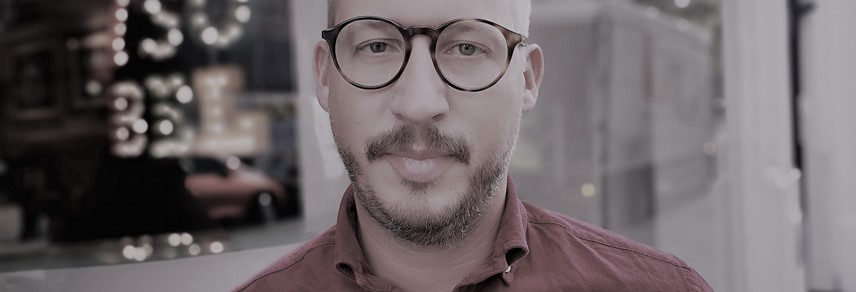
FIVE MINUTES WITH SIMON FINDLATER
Being innovative and pioneering in an ever-changing, competitive industry requires intelligence and dedication. Simon Findlater, creative director at creative agency isobel, talks to Communicate magazine about isobel’s new Micralite campaign and the challenges behind branding for the new generation of parents.
How did the collaboration between isobel and Micralite begin?
They got in touch and asked us to pitch after seeing some of the other ‘out of category’ work we’d created for brands such as Kelly’s of Cornwall ice cream and property agent Savills. They agreed with us that, to stand out in the ridiculously cluttered buggy and stroller market, they’d need to do something different.
Did you conduct any kind of research before starting the rebranding process?
We spoke to the inventors and found out that they were, in fact, just a couple of engineering dads who had become frustrated with other strollers on the market. They wanted to create a stroller that would let them carry on living the lives that they lived before kids came along. We had a thorough look at our competitors, too, and, as part of the pitch, we showed a bunch of rival marketing. It was baffling how nearly all of them were doing and saying exactly the same thing.
How do you adapt the branding of a company to better suit millennials?
Be true to yourself. Millennials are so savvy now that they smell a rat a mile off. So many of Micralite’s competitors used images of perfectly svelte models, living seemingly perfect lives. It all seemed a million miles away from reality, and a little condescending. Being honest and truly reflecting the philosophy of the brand is the best way to cut through to millennials.
What are the differences between branding for millennials and branding for an older age group?
‘Millennials’ is just a fancy word for a specific target market. The challenge of marketing to them is no different to how you might approach any other project. It’s simply down to culture. No matter who you are targeting you need to understand their culture, how they live, what matters to them, how they view the world.
Where did you draw inspiration from for the campaign film ‘Fly’?
We found that the only time people really notice a buggy is when it’s a hindrance to them or holds them back. Micralite was set up by two dads-cum-engineers who wanted to tackle this problem head-on. They wanted to create a buggy that was so well engineered that it wouldn’t hold anyone back from doing the things they love. The idea that ‘the best engineering should go unnoticed’ felt powerful to us and very true to the brand.
Why did you choose an abstract approach by removing the product advertised from the film and what did you want to achieve by doing this?
In this market, images of buggies and strollers and all the other baby paraphernalia are everywhere. Floating babies definitely aren’t. But it wasn’t just done to stand out, it was a very simple way of communicating a powerful core idea.
Why did you decide the updated logo should sport sharp angles and a bright colour palette?
Like everything Micralite, it’s bold and stripped back, with nothing on it that doesn’t serve a purpose. The logo is actually taken from the original patented Micralite buggy design. It’s a pared back version of it, turned 90 degrees anticlockwise to form an ‘M’.
What was the message you wanted the logo to convey about the brand and how did you go about achieving that?
It’s a modern, simple, bold brand with strong engineering roots.
What differentiates isobel from the rest of the creative agencies in the industry?
We’re an independent agency, which means we’re answerable no one but ourselves. And we never have to follow the rules.
For more from Communicate magazine, follow us on Twitter @Communicatemag


